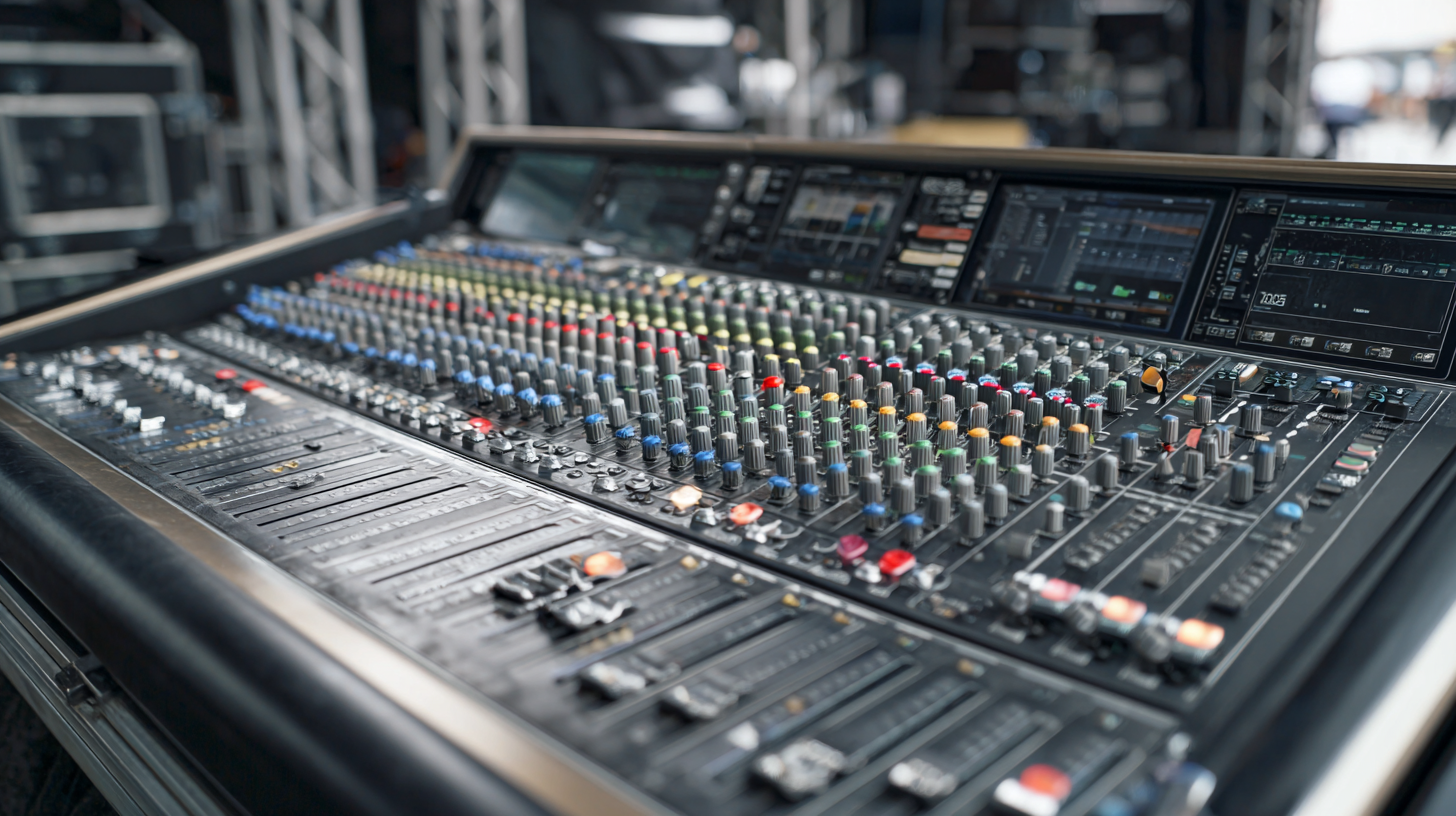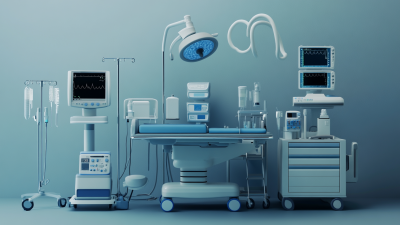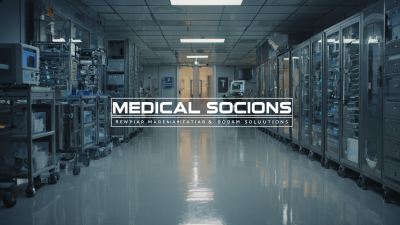Click here to browse our On The Mend Portfolio!
How to Optimize Dme Equipment for Maximum Efficiency Using Industry Standards
In the competitive landscape of the durable medical equipment (DME) industry, optimizing DME equipment for maximum efficiency is crucial for both operational effectiveness and patient satisfaction. According to a recent report by the American Association for Homecare, improper use and management of DME can lead to a staggering 20% decrease in productivity and increased operational costs. Additionally, a study from the National Institute for Health Management indicates that harmonizing DME equipment usage with established industry standards can enhance equipment lifespan by up to 30% and reduce maintenance costs. As healthcare providers strive to deliver high-quality service, understanding the best practices for optimizing DME equipment becomes imperative. This guide will explore strategies grounded in industry standards that can help stakeholders maximize the potential of their DME assets, ensuring better service delivery while reducing costs.

Understanding DME Equipment and Its Importance in Healthcare Efficiency
Durable Medical Equipment (DME) plays a crucial role in enhancing healthcare efficiency by facilitating better patient care and reducing hospital readmission rates. According to a report by the American Hospital Association, the effective use of DME can lead to a 35% decrease in unnecessary hospitalizations. This statistic underscores the importance of optimizing DME equipment to align with industry standards. When healthcare providers strategically select and maintain DME, they can significantly improve patient outcomes and streamline operational processes.
Tips for Optimization: Regular assessments of DME inventory can aid in identifying underutilized equipment. Implementing a structured maintenance schedule not only extends the lifespan of the equipment but also ensures its reliability during critical moments. Additionally, training staff on the latest industry standards and best practices for using DME can further contribute to operational efficiency.
Healthcare facilities must also prioritize selecting high-quality DME that meets regulatory guidelines. The adherence to standards set by organizations such as the FDA and ISO can enhance the safety and performance of medical equipment. A recent report from the National Institute for Health Care Management suggests that facilities using standardized DME protocols experienced up to a 20% improvement in patient satisfaction scores, reinforcing the correlation between DME optimization and overall healthcare quality.
Key Industry Standards for DME Equipment Optimization
When it comes to optimizing Durable Medical Equipment (DME) for maximum efficiency, adhering to key industry standards plays a vital role. The American National Standards Institute (ANSI) alongside the Association for the Advancement of Medical Instrumentation (AAMI) provide essential frameworks that enhance the functionality and safety of DME. Reports indicate that compliance with these standards can lead to a 20-30% increase in equipment lifespan and significantly reduce operational costs, thereby improving patient care outcomes.
Tips for optimization include conducting regular maintenance checks in line with industry guidelines, as equipment that adheres to these standards shows a 15% greater operational efficiency. Additionally, implementing automated monitoring systems can ensure that all equipment remains compliant with the latest safety protocols, and data management systems that follow Health Insurance Portability and Accountability Act (HIPAA) guidelines can further enhance data security while ensuring seamless operations.
Another crucial aspect is training staff on the optimal use of DME according to these industry standards. Data suggests that facilities that invest in staff training see a 25% reduction in equipment misuse and malfunctions. This not only maximizes equipment efficiency but also fosters a culture of safety and accountability within organizations, which is integral to the overall efficiency of healthcare delivery.
Optimizing DME Equipment Efficiency
This chart illustrates the efficiency scores of various factors impacting the optimization of DME equipment. As the data shows, regular calibration and operator training significantly enhance operational efficiency.
Best Practices for Maintenance and Upkeep of DME Equipment
Maintaining durable medical equipment (DME) is crucial for ensuring optimal performance and longevity. Regular maintenance practices should be implemented based on established industry standards. One effective approach is to establish a routine inspection schedule that includes checking for wear and tear, ensuring that components are functioning correctly, and verifying that all safety features are operational. Documentation of maintenance activities not only helps track the condition of equipment but also aids in compliance with regulatory requirements.

Another key aspect of upkeep is training staff on proper usage and handling of DME. Educating users about the equipment's features and limitations can significantly decrease the likelihood of misuse, ultimately reducing the wear on the devices. Additionally, maintaining a clean environment for DME can help prevent unnecessary damage and contamination. Ensuring that equipment is stored properly and is regularly sanitized can prolong its lifespan, enhancing its efficiency in patient care. Adopting these best practices can lead to better performance outcomes and greater satisfaction among both providers and patients.
Utilizing Technology and Data Analysis for Enhanced DME Performance
The utilization of technology and data analysis is crucial for enhancing the performance of Durable Medical Equipment (DME). By integrating advanced technologies such as IoT devices and machine learning algorithms, healthcare providers can collect real-time data on equipment usage and patient outcomes. This data enables providers to identify patterns, track the effectiveness of various devices, and make informed decisions regarding equipment management and maintenance. For instance, predictive analytics can forecast potential equipment failures, allowing for timely interventions before a breakdown occurs, thus minimizing downtime and optimizing resources.
Furthermore, leveraging data visualization tools helps in presenting complex data in a more accessible manner. Stakeholders can easily comprehend trends and inefficiencies through dashboards that illustrate equipment performance metrics. This analysis is not limited to operational efficiency; it extends to patient satisfaction as well. By continuously monitoring the effectiveness and usability of DME through data-driven insights, providers can ensure that patients receive the best possible equipment tailored to their needs, ultimately leading to improved health outcomes.

Training Staff on Industry Standards for Effective DME Usage
Training staff on industry standards is crucial for ensuring the effective usage of Durable Medical Equipment (DME). By providing comprehensive training, healthcare facilities can empower their employees to understand the specific protocols and standards that govern DME operation and maintenance. Knowledgeable staff can minimize errors, streamline workflows, and enhance patient outcomes through proper equipment usage.
Moreover, continuous education on industry standards fosters a culture of safety and compliance within the organization. Regular training sessions can include updates on new technologies and practices, as well as refreshers on established protocols. By emphasizing the importance of adhering to industry standards, staff members are more likely to appreciate their roles and responsibilities in optimizing DME efficiency. This ultimately leads to improved operational performance and a higher level of care for patients who rely on this essential equipment.
| How to Optimize DME Equipment for Maximum Efficiency Using Industry Standards - Training Staff on Industry Standards for Effective DME Usage | |||
|---|---|---|---|
| Equipment Type | Efficiency Rating (%) | Standard Compliance Level | Staff Training Status |
| Oxygen Concentrator | 95 | Fully Compliant | Trained |
| Hospital Bed | 88 | Partially Compliant | Not Trained |
| Wheelchair | 92 | Fully Compliant | Trained |
| CPAP Machine | 90 | Fully Compliant | Trained |
| Suction Pump | 85 | Non-Compliant | Partially Trained |
Related Posts
-

Exploring Innovative Options for At Home Medical Supplies
-

Exploring Innovative Alternatives for Essential Home Health Supplies
-

7 Tips for Selecting the Right Medical Supplies to Enhance Patient Care
-

Comprehensive Guide to Best Medical Supply Equipment: Essential Specifications and User Tutorials
-

5 Best Medical Accessories Driving 2023 Global Healthcare Procurement Trends
-

Leading Global Manufacturer of Best Medical Equipment Rental Solutions
View Products
- Bathroom Safety & Shower Systems
- Canes, Knee Walkers, Rollators & Wheelchairs
- Compression Socks, Stockings & Custom Garments
- CPAP Machines, Devices, Accessories & Supplies
- Incontinence Supplies
- Lift, Reclining, and Sleeper Chairs
- Power Scooters, Power Chairs & Accessories
- Ramps & Handicap Access
- Stair, Platform & Portable Lifts
- Blog
Our Locations
Visit Us in CT, NY & CA
Looking for a 'medical store near me'? Call On The Mend for the equipment and service you need!
